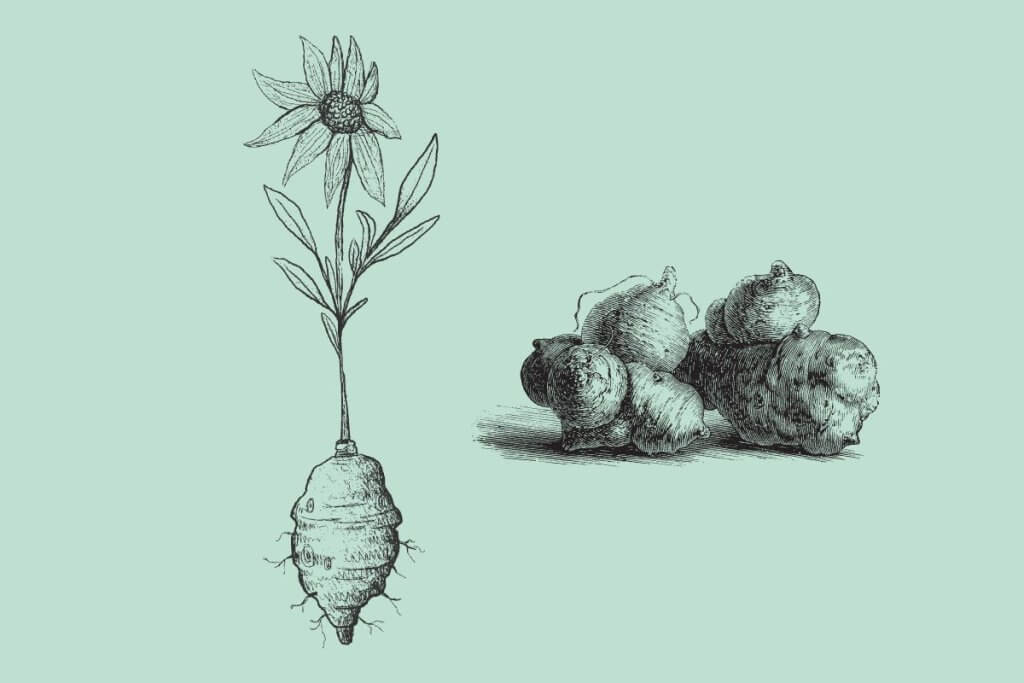A sunchoke, also known as Jerusalem artichoke or sunroot, is a type of root vegetable that belongs to the sunflower family (Asteraceae). Despite its name, it is not related to artichokes and is not from Jerusalem. Sunchokes are native to North America and can be eaten both raw and cooked.
Sunchokes (Helianthus tuberosus) are a native North American plant and were cultivated by Native American tribes before European settlement.
Over time, they have naturalized in various parts of North America and can sometimes be found growing in the wild, particularly in areas with rich and moist soils.
The name “sunchoke” might come from the fact that the plant is a type of sunflower, and the tubers grow underground like potatoes. The name “Jerusalem artichoke” is believed to be a corruption of the Italian word “girasole,” which means sunflower.
What Are You Foraging For Right Now?
We're thrilled to hear your ideas. What would you like to submit today? Feel free to share your thoughts and experiences with us.
Keep in mind that the term “sunchoke” is more commonly used in North America, while “Jerusalem artichoke” is more prevalent in Europe. Despite its names, the sunchoke is a versatile and tasty vegetable with a unique flavor profile.
What Does a Sunchoke Look Like?
Here’s what a sunchoke looks like:
Tubers:
- Sunchokes are root vegetables that grow underground, producing knobby, irregularly shaped tubers.
- The tubers can vary in size, ranging from small to medium-sized.
- The skin of the tubers is thin, and it comes in various colors, including light brown, reddish, and sometimes even purplish hues.
- The skin may have spots, bumps, and irregularities.
Flesh:
- When you peel back the skin, you’ll find the flesh of the sunchoke. It is typically white to pale beige in color.
- The flesh has a crisp, crunchy texture, similar to that of water chestnuts.
Flowers:
- Sunchokes are grown on tall, sunflower-like plants that can reach heights of 6 to 10 feet (1.8 to 3 meters).
- The plant produces yellow flowers that resemble small sunflowers.
Overall, the appearance of a sunchoke is unique and unmistakable due to its irregular shape and knobby texture.

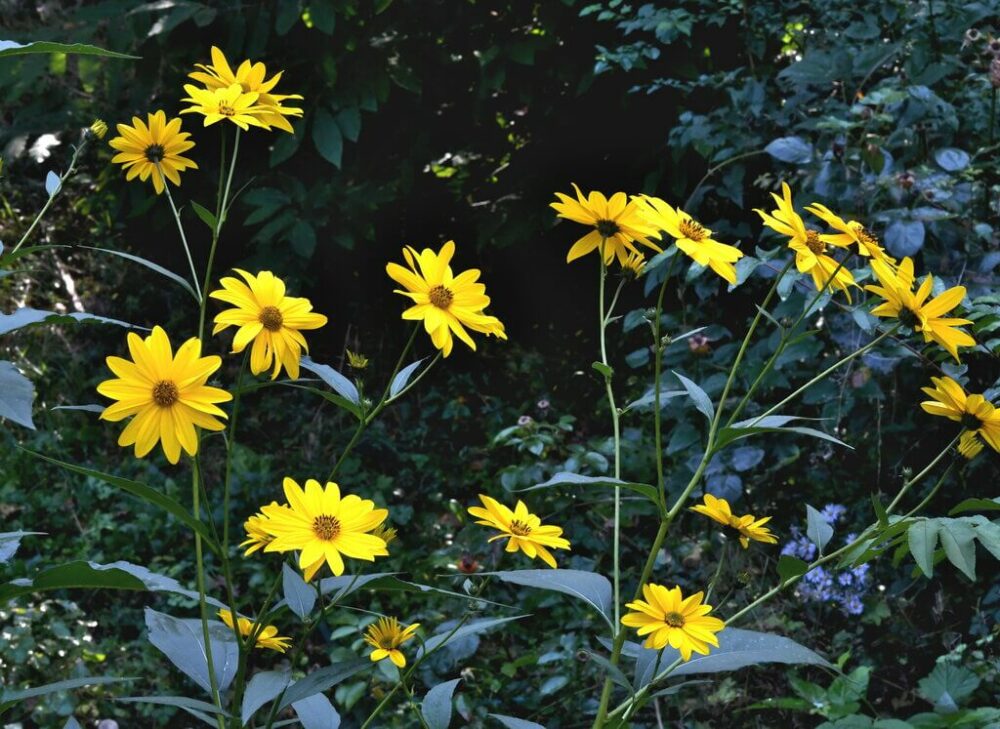
Other edible tubers and roots you might be interested in reading about:
What type of sunchokes are there?
Sunchokes have a few different varieties or cultivars that you might come across. While they all share similar characteristics, there can be slight differences in flavor, size, and appearance. Here are a few common types of sunchokes:
- Common Sunchoke: This is the most widely grown and recognized variety of sunchoke. It has knobby, irregularly shaped tubers with thin, light brown to purplish skin and white to pale beige flesh. It has a sweet, nutty flavor and is often used in cooking and salads.
- Red Fuseau Sunchoke: This variety has reddish skin and slightly sweeter, nuttier flesh than the common sunchoke. The color of the skin can vary, ranging from pale pink to deep red. It’s often used in the same ways as the common sunchoke.
- White Fuseau Sunchoke: Similar to the red fuseau variety, the white fuseau sunchoke has a lighter-colored skin and a slightly different flavor profile. It is still sweet and nutty but may have milder flavors.
- Stampede Sunchoke: This variety is known for its large, round tubers and pale beige skin. The flesh is crisp and sweet, making it a popular choice for both culinary and ornamental purposes.
- French Sunchoke (Topinambour): This type has elongated tubers and a pinkish or reddish skin. The flavor is often described as nutty and slightly sweet.
- Wild Sunchoke: Wild sunchokes can also be found growing in some regions. They may have smaller tubers and more irregular shapes compared to cultivated varieties.
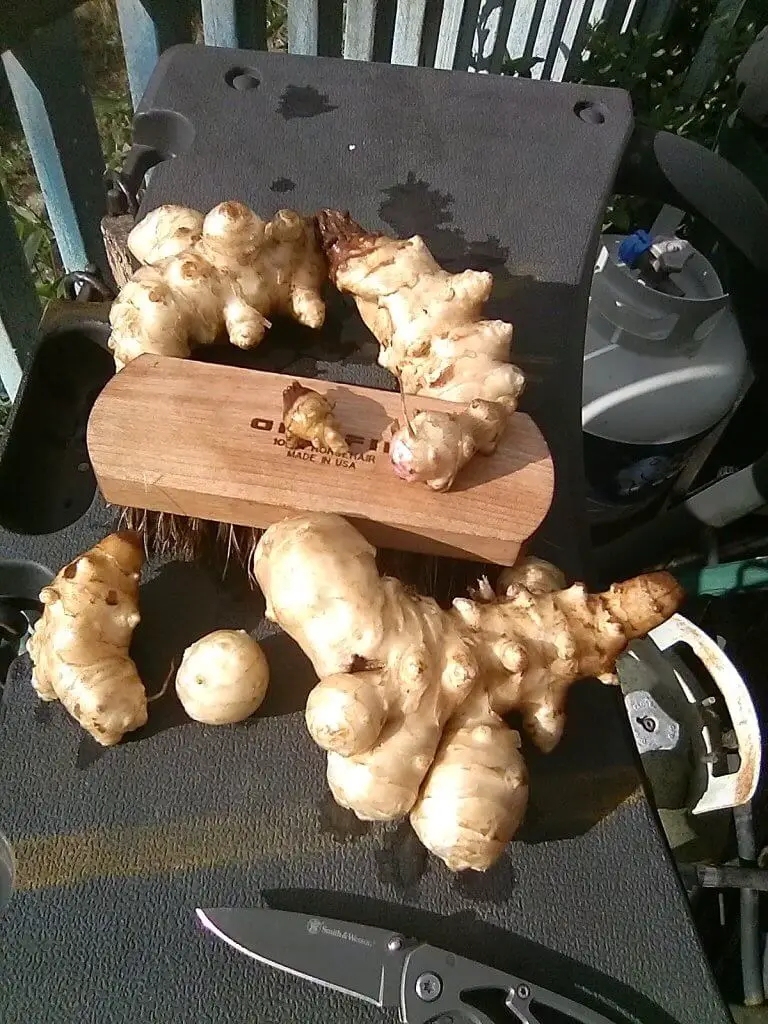
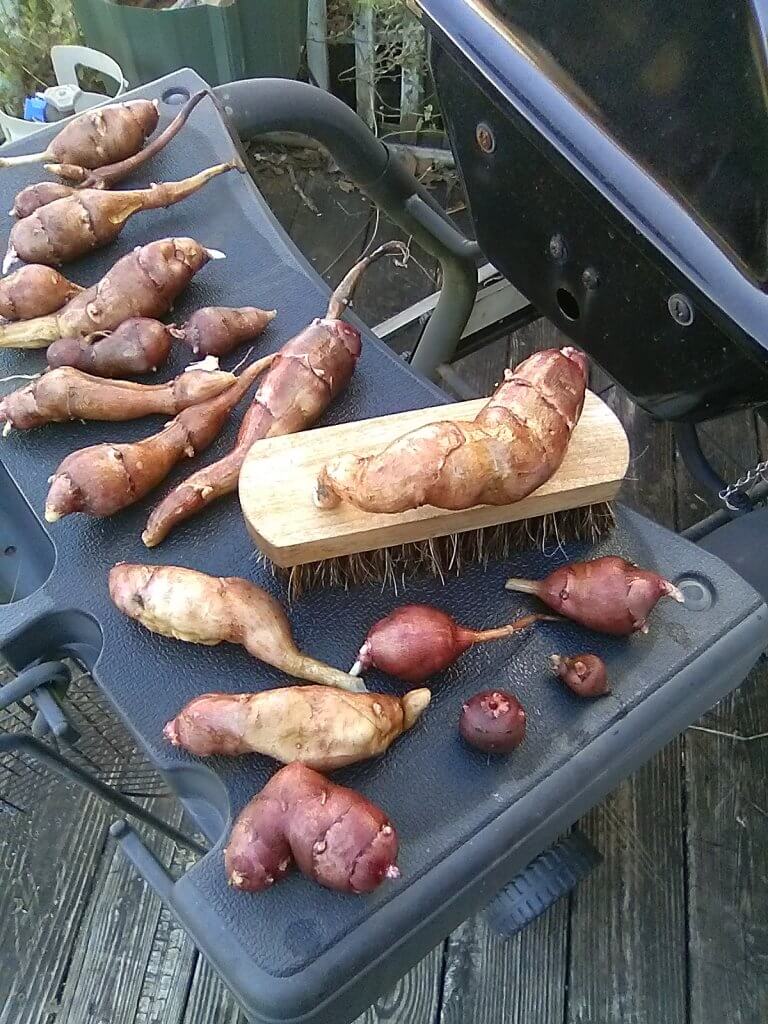
What is the difference between sunchokes and potatoes?
Sunchokes and potatoes are both root vegetables, but they have several differences in terms of taste, nutritional content, appearance, and culinary uses.
Sunchokes are often used as a lower-carb substitute for potatoes in recipes for those seeking a different flavor profile and nutritional benefits.

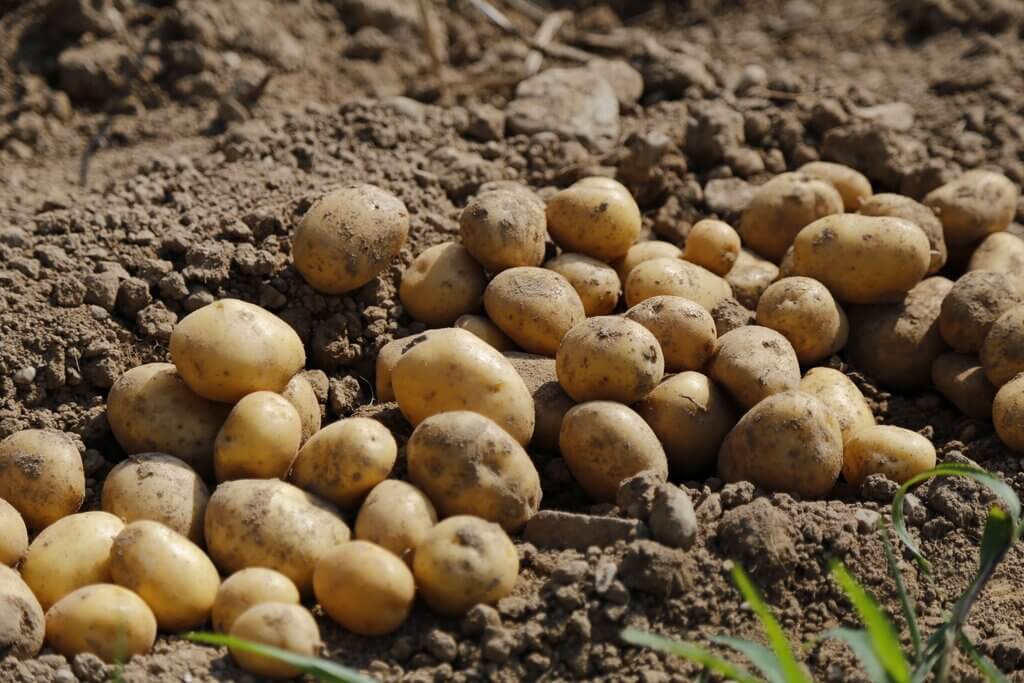
What does sunchoke taste like?
Sunchokes have a natural sweetness that is often compared to the sweetness of artichoke hearts or jicama. This sweetness is not overly intense like that of sugar but is more subtle and mellow.
Many people describe the flavor of sunchokes as nutty, with notes of almonds or hazelnuts.
Sunchokes have a crispy, crunchy texture when raw, which adds to the sensation of freshness when you bite into them. When cooked, sunchokes become sweeter, and their nutty flavors become more pronounced.
Do sunchokes taste anything like potatoes?
While there are similarities between the tastes of sunchokes and potatoes, sunchokes have their own unique flavor profile due to their sweetness and nuttiness.
Sunchokes have a more complex flavor profile with notes of sweetness, nuttiness, and mild earthiness. Potatoes, on the other hand, are relatively neutral in flavor and can take on the taste of other ingredients more easily.
If you enjoy the taste of potatoes, you may also appreciate the distinctive flavor that sunchokes bring to dishes.
Where do sunchokes grow?
Sunchokes are native to eastern North America, with their natural range extending from eastern Canada down to the southern United States.
Sunchokes can be found growing wild in areas where they have naturalized, especially along riverbanks, meadows, and open areas.

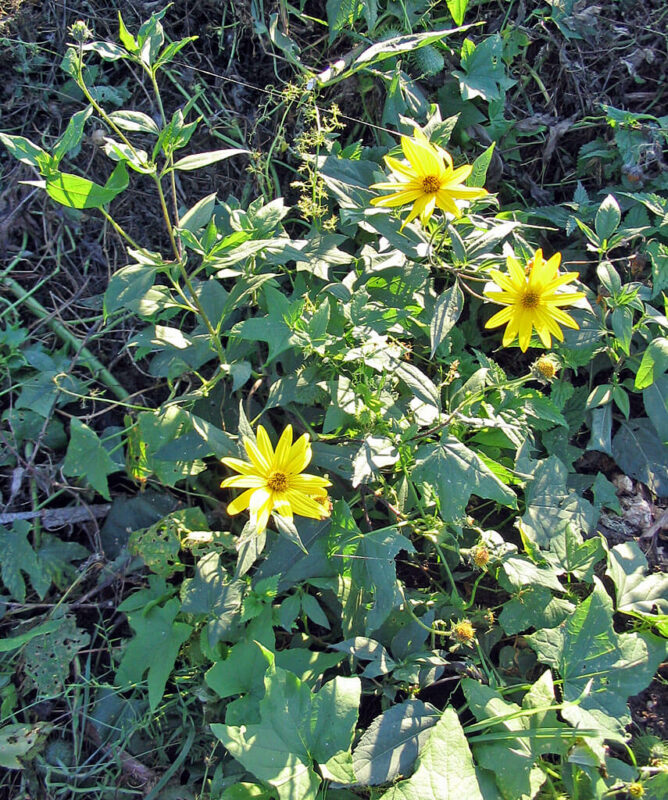
Can you grow them in your garden?
Yes, you can definitely grow sunchokes in your garden. They are relatively easy to cultivate and can be a valuable addition to your garden for both their edible tubers and their ornamental qualities.
Planting:
- Choose a sunny location in your garden with well-draining soil. Sunchokes prefer full sun but can tolerate partial shade.
Planting:
- Plant the tubers in the ground during the spring or fall, around the time when you would plant potatoes.
- Plant the tubers about 3-4 inches deep and space them about 12-18 inches apart. You can plant them in rows or groups.
Care:
- Keep the soil consistently moist, especially during the growing season.
- Sunchokes can grow quite tall, so provide support (staking) if needed to prevent them from falling over in strong winds.
Harvesting:
- Sunchokes can be harvested in late fall after the foliage has died back. You can also leave some tubers in the ground to overwinter for an early spring harvest.
- Carefully dig up the tubers using a garden fork or shovel. Be gentle to avoid damaging the tubers.
Propagation:
- Sunchokes can spread quickly through their tubers and rhizomes, so it’s important to control their growth if you don’t want them to become invasive.
- Harvesting a portion of the tubers each year can help manage their growth.
Ornamental Value:
- Sunchokes produce tall, sunflower-like plants that can add height and visual interest to your garden.
- Their yellow flowers are attractive to pollinators and can contribute to the biodiversity of your garden.
Edible Uses:
- Sunchokes are harvested for their tubers, which can be cooked and eaten in various ways, similar to potatoes.
- The tubers can be roasted, sautéed, boiled, mashed, or used in soups and stews.
Remember that sunchokes have a tendency to spread, so it’s a good idea to plant them in an area where they won’t interfere with other plants.

What are the benefits of sunchokes?
Sunchokes offer several potential health benefits due to their nutritional content:
Dietary Fiber: Sunchokes are a good source of dietary fiber, particularly a type of fiber called inulin. Inulin can act as a prebiotic, supporting the growth of beneficial gut bacteria and promoting digestive health.
Low in Calories: Sunchokes are relatively low in calories, making them a suitable option for those watching their calorie intake.
Vitamins and Minerals: Sunchokes provide vitamins and minerals, including vitamin C, potassium, phosphorus, and iron. These nutrients play various roles in maintaining overall health, such as supporting the immune system and regulating blood pressure.
Blood Sugar Regulation: The inulin content in sunchokes may help regulate blood sugar levels by slowing down the absorption of glucose in the digestive tract. This can be beneficial for individuals with diabetes or those looking to manage blood sugar levels.
Weight Management: Due to their high fiber content, sunchokes can contribute to feelings of fullness and satiety, potentially aiding in weight management by reducing overeating.
Gut Health: Inulin acts as a prebiotic, providing nourishment for beneficial gut bacteria. A healthy gut microbiome is associated with various aspects of health, including immune function and digestion.
Bone Health: Sunchokes contain phosphorus, an essential mineral for maintaining bone health and supporting bone structure.
Energy Source: The carbohydrates in sunchokes are primarily in the form of inulin, a complex carbohydrate that provides a slow and sustained release of energy.
Digestive Regularity: The dietary fiber in sunchokes promotes regular bowel movements and can help prevent constipation.
Do sunchokes cause bloating and flatulence?
Yes, sunchokes can indeed cause bloating and flatulence in some individuals, primarily due to their high content of inulin, a type of carbohydrate that acts as a prebiotic in the gut.
As suggested by one of our readers who cultivates sunchokes, there are four ways to convert inulin into fructose which prevents the flatulence issue.
- One is to freeze the tubers
- Another way is to ferment them (hey can be thin sliced or shredded like hashbrowns and fermented exactly the way sauerkraut is done, but with slightly more salt in the mix as they are also wetter than cabbage)
- The third way is to cook or roast them
- The fourth way is to pickle them with an acidic ingredient
If you’re new to eating sunchokes, introduce them to your diet gradually. Begin with a small portion and monitor how your body responds.
How to cook sunchokes?
Here are a few popular methods for cooking sunchokes:
Roasting:
- Preheat your oven to 400°F (200°C).
- Wash and scrub the sunchokes to remove any dirt. You can peel them if desired, but it’s not necessary.
- Cut the sunchokes into bite-sized pieces.
- Toss the sunchokes with olive oil, salt, and pepper.
- Spread the sunchokes in a single layer on a baking sheet.
- Roast in the preheated oven for about 25-30 minutes or until they are tender and slightly caramelized.
Sautéing:
- Wash and scrub the sunchokes, and then cut them into thin slices.
- Heat a skillet over medium heat and add a drizzle of oil or butter.
- Add the sliced sunchokes to the skillet and sauté for about 10-15 minutes, stirring occasionally, until they are tender and lightly browned.
Boiling:
- Wash and scrub the sunchokes, and then peel and cut them into smaller pieces.
- Place the sunchokes in a pot and cover them with water.
- Bring the water to a boil and then reduce the heat to a simmer.
- Cook the sunchokes for about 15-20 minutes or until they are tender when pierced with a fork.
- Drain the cooked sunchokes and serve.
Mashing:
- Follow the boiling method to cook the sunchokes until they are tender.
- Drain the cooked sunchokes and mash them using a potato masher or fork.
- Season the mashed sunchokes with salt, pepper, and butter or olive oil for added flavor.
Soup or Puree:
- Use cooked sunchokes as a base for soups or purees. After boiling or roasting, blend the sunchokes with broth or cream to create a creamy and flavorful soup.
Gratin or Casserole:
- Layer cooked and sliced sunchokes in a baking dish with other vegetables, cheese, and seasonings.
- Bake until the top is golden and the flavors are melded together.
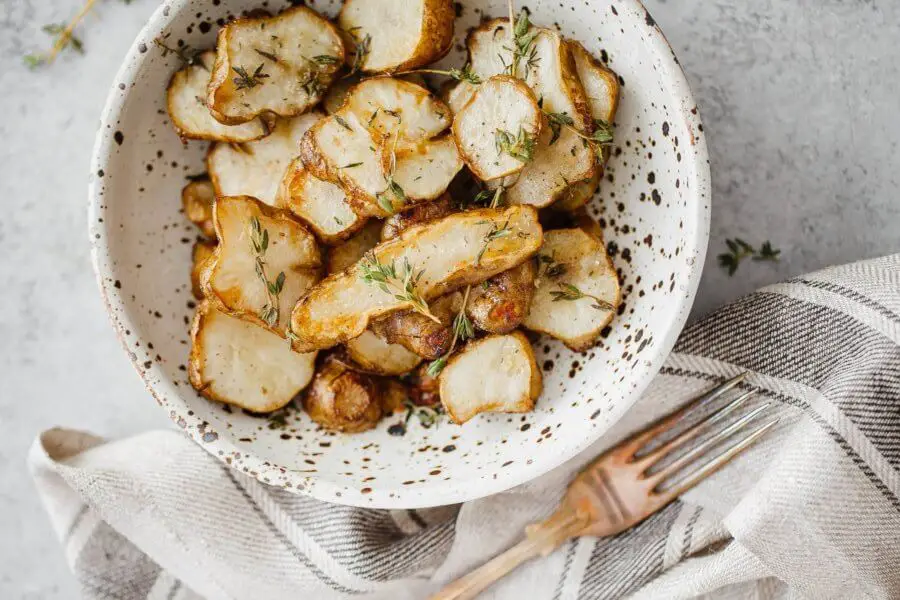
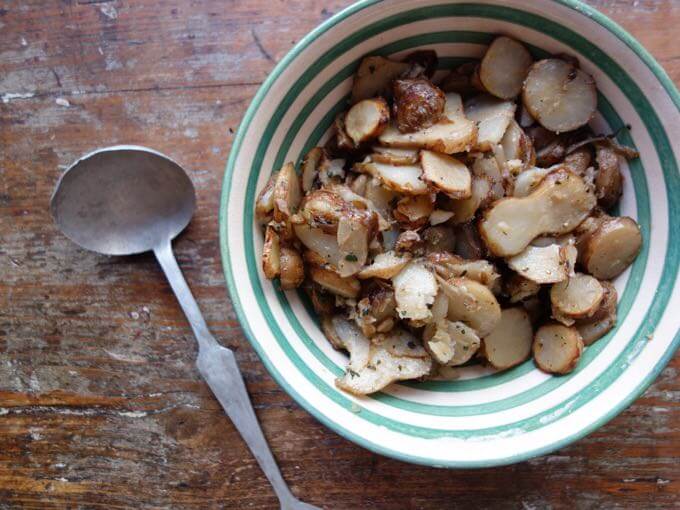
Where and when to Forage for sunchokes?
Here are some general guidelines on where to forage for sunchokes in the United States:
Where to forage
Eastern United States:
- Sunchokes are most commonly found in the eastern United States, including states such as New York, Pennsylvania, Virginia, North Carolina, and Florida.
- Look for them in open areas, meadows, along roadsides, and near the edges of forests.
Midwestern United States:
- Sunchokes are also present in the Midwest, including states such as Ohio, Illinois, Indiana, and Michigan.
- You may find them in similar habitats as mentioned above, such as open areas and meadows.
Southern United States:
- Sunchokes can be found in the southern United States as well, including states such as Texas, Louisiana, and Georgia.
- Keep an eye out for them in locations with suitable growing conditions, including sunny or partially shaded areas.
Wild and Naturalized Areas:
- Sunchokes can sometimes be found growing in the wild or semi-wild conditions in areas where they have naturalized.
- They may also be found in gardens, abandoned fields, and areas with disturbed soil.
When to forage
- The best time to forage for sunchokes is during the late fall, after the plant’s above-ground foliage has died back due to cold weather or frost.
- Sunchokes can be foraged from late October through November, depending on your region’s climate.
- Once the leaves turn brown and wither, the tubers are ready to be harvested.
Identifying Harvest-Ready Sunchokes
- The dead or dying foliage will be a key indicator that the tubers are ready for harvest.
- Look for the distinctive knobby tubers beneath the ground. They may be found in clusters.
- The tubers’ skin can be light brown, reddish, or purplish in color.
What to read next: A Forager’s Guide To Yellow Wood Sorrel
Ana has always been interested in all things nature and flora. With her expertise in home gardening and interest in foraging, she has been spending her weekends and free time looking for edible native plants, flowers, and fungi. One of her many hobbies includes testing new savory and sweet recipes, juices or teas made from freshly picked plants, wild fruits, or mushrooms.

